These scanned images contain Ricky’s article from a 1999 edition of The PennyRail. Enjoy.
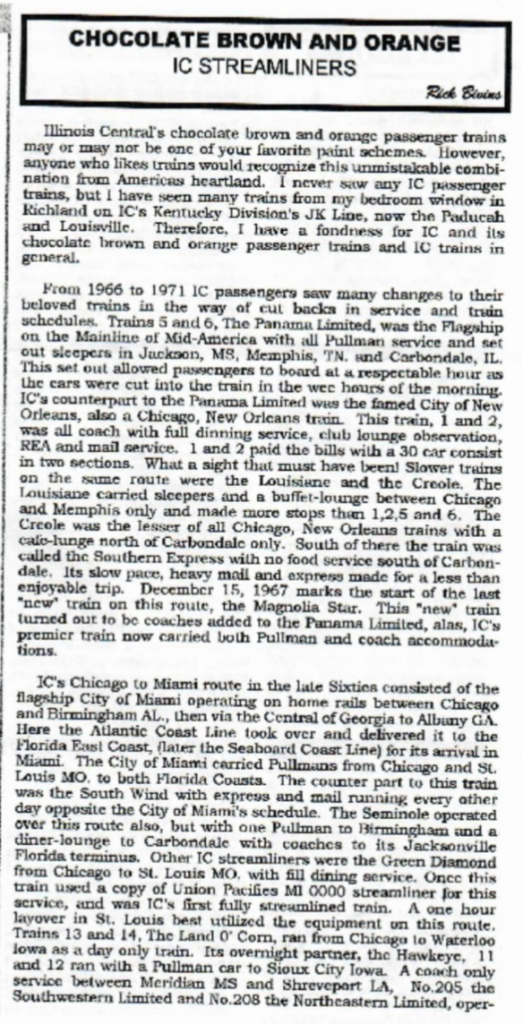


These photos of NC&StL 576 are taken from Nashville Steam’s Facebook page. See Nashville Steam on Facebook for credits. 576 sits beneath the shed at the Tennessee Central Museum (Nashville).
Work continues to disassemble No. 576 and prepare the locomotive’s appliances for repairs and servicing. One of the biggest tasks was to remove the front end of the smoke box for access to the boiler’s interior. Now we have a better approach to the superheaters and eventually the tubes and flues. Lots of progress!
(taken from Nashville Steam Facebook page)
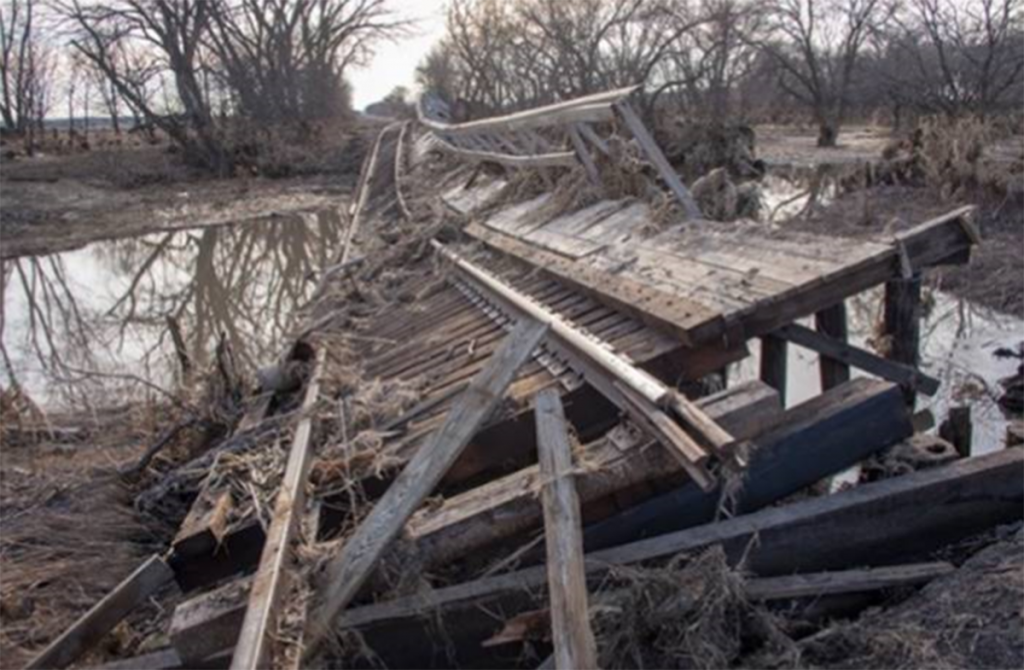
In the days of “clickety-clack” railroading Fishplates are what connected rails end-to-end. A pair protrude from the rail on the flood damaged trestle. Depending on the weight & size of the rail there were four or six bolt holes. In this scene it could have been either, but the bolts on the missing rail definitely failed under much duress.
The introduction of ribbon-rail reduced track maintenance, provided a safer and more reliable track and eliminated the clickety-clack that helped put you to sleep in those Pullman sleepers. Track maintenance crews, known as Gandy-Dancers, would routinely inspect, and tighten rail-bolts.
The scene is storm damage in the upper mid-west earlier this Spring. The flash-flood lifted the trestle off the pilings, and left it bowed with the stream-flow. A closer look will show the right-of-way disappearing to the horizon, in line with the exposed pilings.
Credits: bridge photographer unknown, seen in TRAINS Newswire. Apparatus from the internet, (also called track jewelry by some…)


A large high-speed locomotive, like the New York Central’s Niagara 4-8-4, will consume a lot of water. By volume, the loco will require many times more water than fuel. At Tivoli, beside the Hudson River, #6009 takes water from a track-pan at 80 MPH. A Hostler fills the tank to capacity from a water-plug, probably at Harmon where passenger trains from Grand Central Terminal switch from electrics to steam or diesel.
The Central’s marketing and advertising many times, included the phrase the “Water Level Route.” Chicago-bound trains followed water-courses and avoided any serious grades. Their posh all-Pullman 20th Century Limited promotional material toted “ride and sleep on the Water Level Route.”
Track pans were spaced about thirty miles apart for the entire route. A closer look at the tender clearly shows the enormous length of the 46-ton coal bunker, and the relatively small water compartment. The Niagara needed refueling only once between the “Big-Apple” and the “Windy-City.”
Credits: Photos by W. A. Akin as seen in Kalmbach’s Steam’s Lost Empire
Submitted by Gary Ostlund
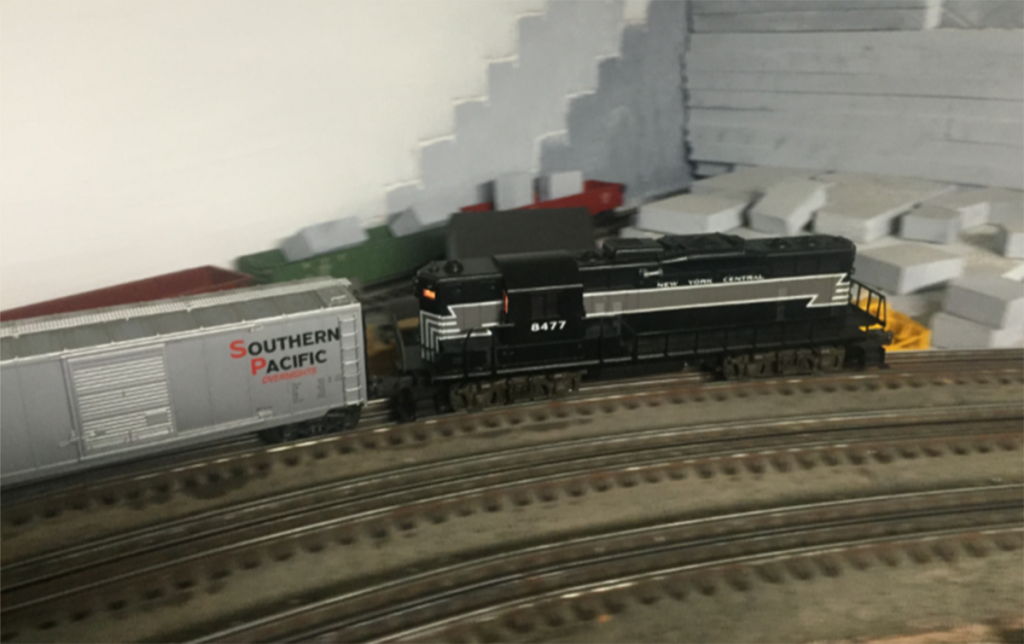
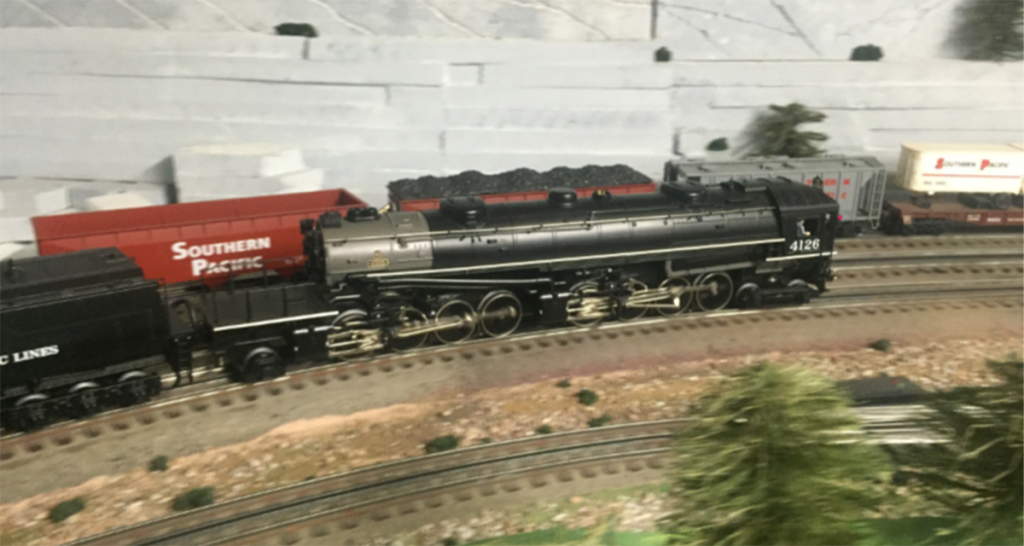
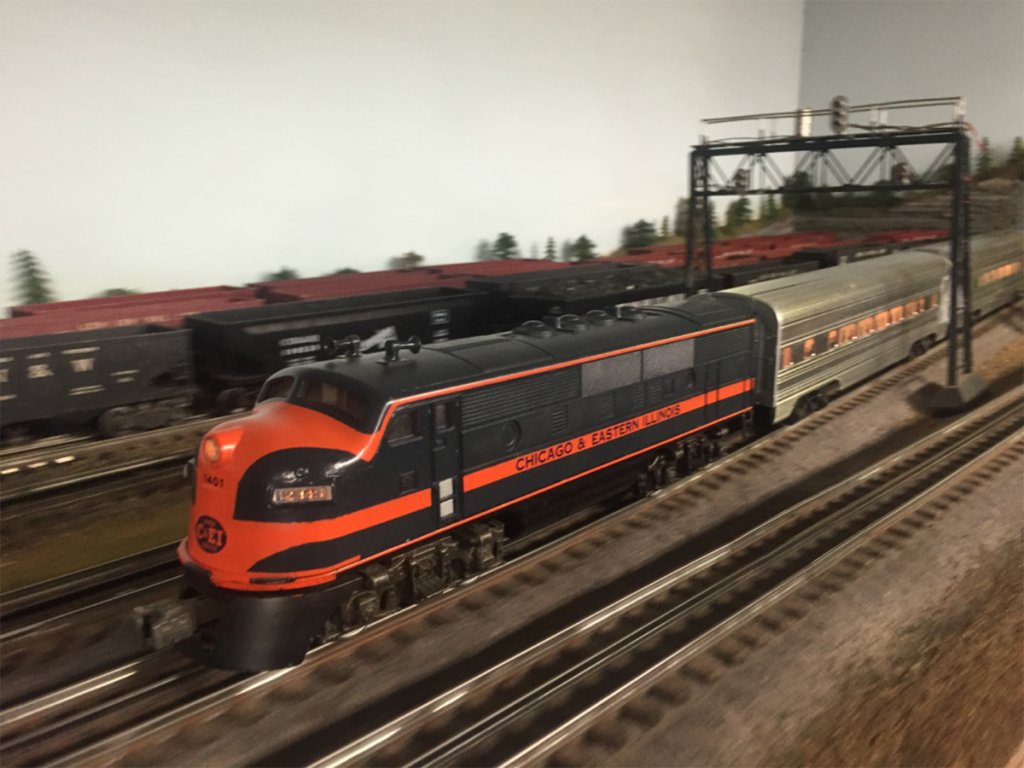
Top to bottom – A New York Central Lionel GP-9 hustles freight on the C&W RR. A Southern Pacific Cab Forward owned by Wally Watts on the C&W RR. A custom painted C&EI Lionel F-3 owned by Don Clayton speeds along the rails of the C&W RR. – Rick Bivins.
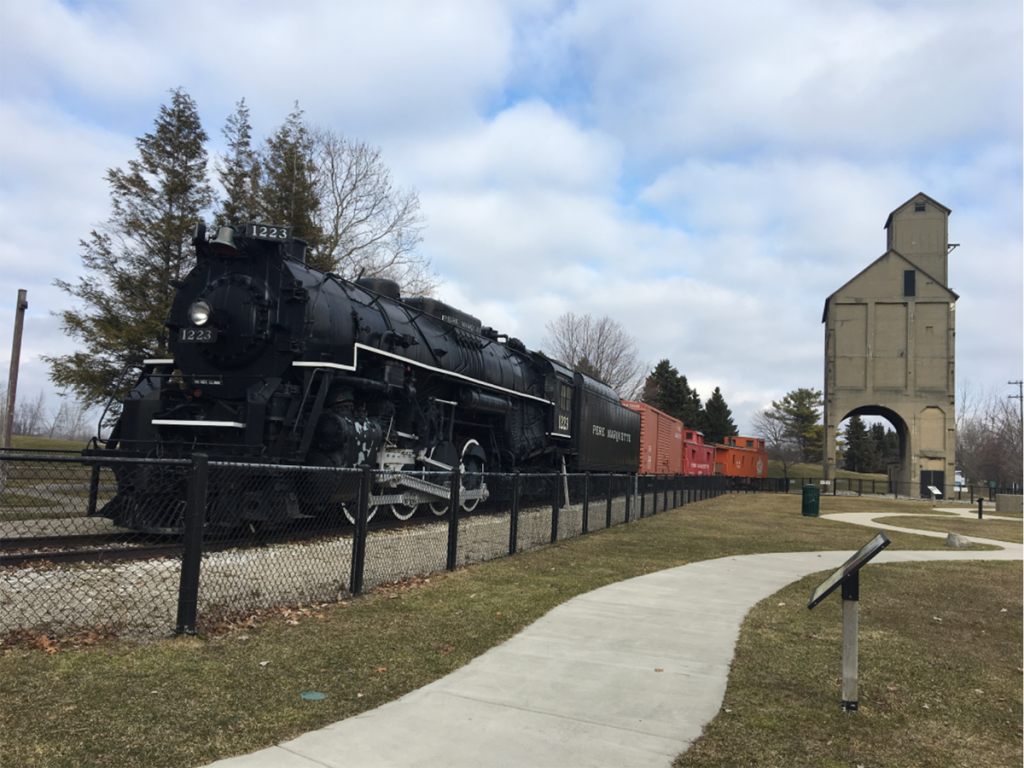
Pere Marquette 2-8-4 Berkshire 1223, a couple of cabooses, and the former coaling tower at Grand Haven, Michigan, stand as a proud reminder of an earlier era. After retirement in 1951, the locomotive was displayed at the Michigan State Fairgrounds in Detroit until moving to Grand Haven in 1981. Sister 1225 carries on the tradition of the family as the star attraction of the Steam Railroad Institute in Owosso, Michigan and was featured in the movie adaptation of The Polar Express. Photo taken 03/21/2019 at Grand Haven, MI by Chris Dees.
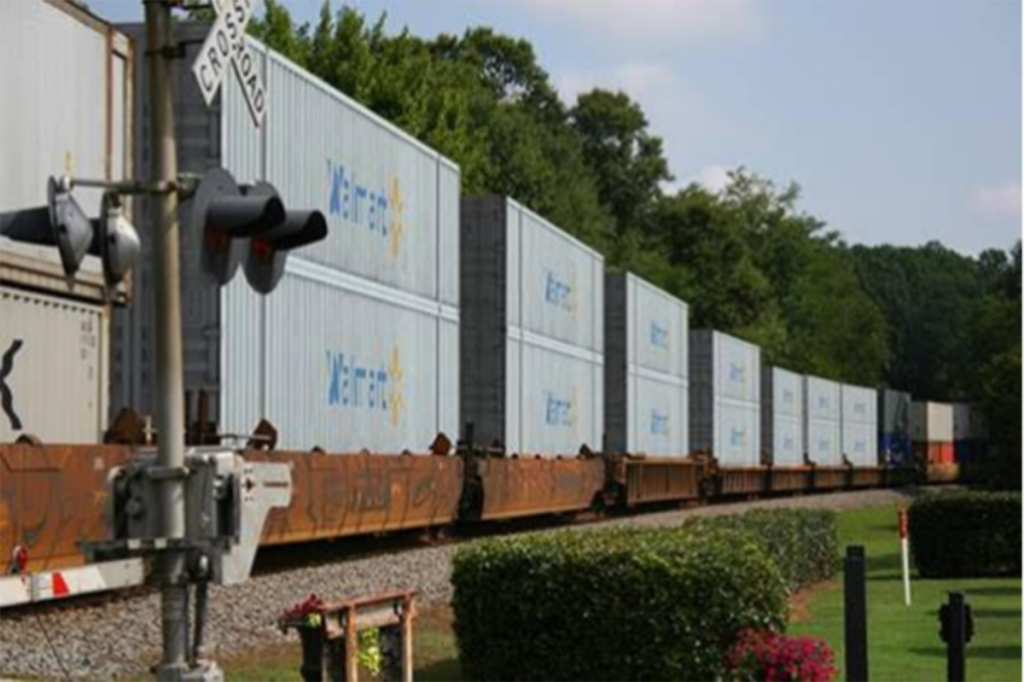
Spotting features: photo- Kalmbach Media
This is not your ordinary well-manicured railroad R-O-Way (city park..?) The roadbed is nicely maintained, the ballast is neatly dressed, (little attention is given to most land abutting RR ROW.) The crossing arm is down as it should be, and we must assume the lights are flashing alternately. (The crossing arms might be short, as there are no counter-balancing weights. Perhaps this is a walking trail (in that park) rather than a highway crossing.)
Orange-tipped gas line marker (some rights-or-way are used for buried utilities, phone lines mostly, but this appears to be a line crossing under the railroad). Rusty – welded, protective barrier made of used “rail.” To me that means the railroad probably fabricated and placed it there. (is it protecting a fire Hydrant.? Seems to be in an unusual location, so close to the rails, yet there is foliage). Graffiti-laden well-cars. (the closest being an articulated unit, then a solo, followed by a 5-set, the fifth segment in the shade. Articulated units share a wheel-set between each car.)
Wally-world has gone modern (those containers have been extended to the legal limit of 53 feet, also there just may be an element of “promotion” with such dominant placement.) It’s Spring or Summer (who can identify the red flowers..? Can anybody ID the location?)
My friend and advisor, Dave Sprau correctly pointed out that this was a promotional display kicking off new logistics within the Walmart organization.
– Gary O. Ostlund
These photos of NC&StL 576 are taken from Nashville Steam’s Facebook page. See Nashville Steam on Facebook for credits. 576 sits beneath the shed at the Tennessee Central Museum (Nashville). The Facebook post with the shot beckons people to come see the locomotive this Saturday, April 13, before she begins being disassembled for inspection work.
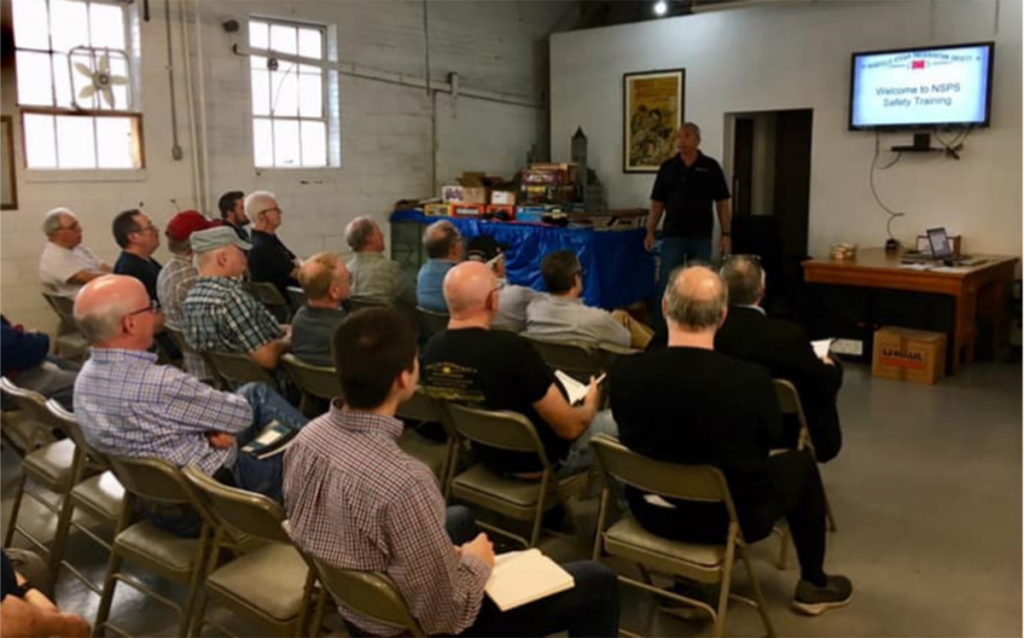
The first volunteer safety training was held April 3, 2019, at the Tennessee Central Museum. Source- Facebook.

Greetings fellow rail fans. And welcome to spring! I’m sure everyone is ready for warm weather, rail fan events, mosquitoes, sunburn and grass to mow! Yes I am being sarcastic. I always say I enjoy winter much more than summer. I actually enjoy the cold and the luxury of the above mentioned events not cutting into rail fan time, train room time along with the many Holy Train Nights throughout winter. But summer is upon us and that means other things to do. However, we will continue with our monthly meetings and scheduled events many of which will be mentioned in the meeting Monday the 15th. Hats off the Cooper Smith for presenting a fine program in March.
The Tennessee Central is an interesting railroad. Cooper brought much research and information to the table last month. If you have been keeping up with rail fan news, Union Pacific Big Boy number 4014 will be on the rails very soon to celebrate the 150th anniversary of the Driving of the Golden Spike at Promontory Utah. I am sure the Big Boy under steam will be a sight to behold. Nashville Steam is making progress returning NC&St.L 576 to to life. These are only a few events. Many more are in the works. Being track side right here in our Western Kentucky backyard can yield quite a show of trains. I have seen many foreign road units lately. Not to mention watching for rolling stock from fallen flag roads. Our meeting agenda this month has a few items of importance but the business portion should go quickly.
Our program and refreshments should be spot on for spring. Get out and see some trains. Make the meeting and bring a guest. Stay track side on public property and stay safe. I hope to see you Monday.
Ricky
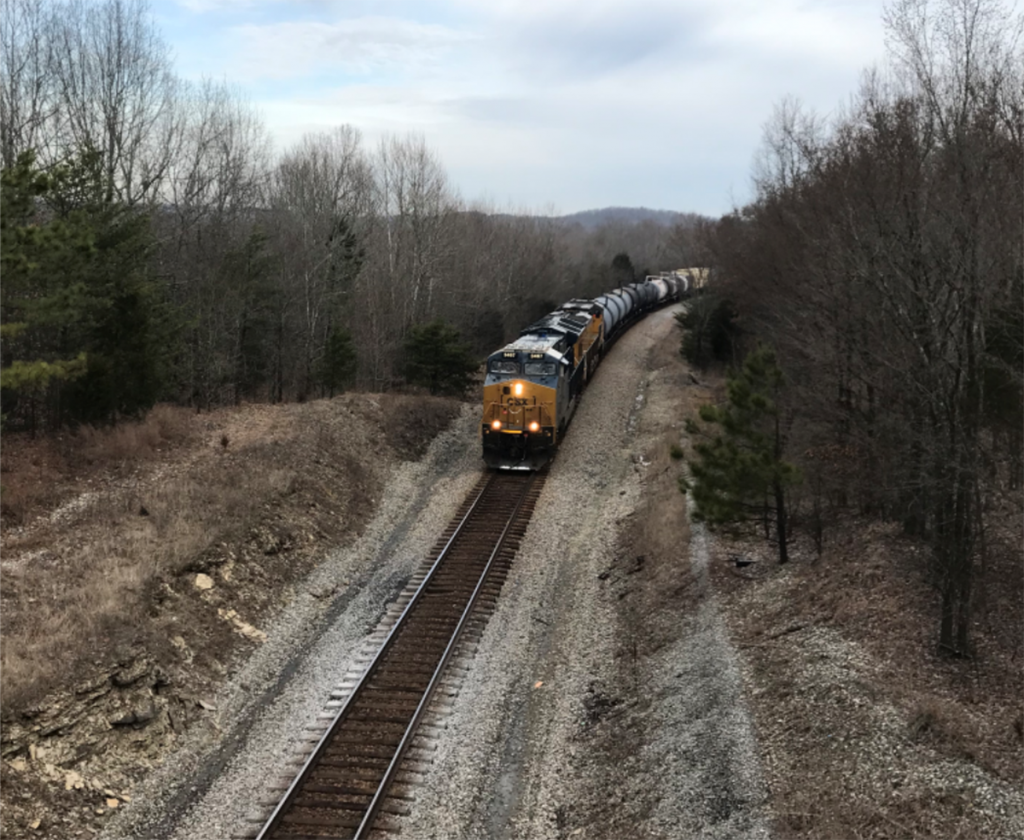
Bill Thomas got this view of a south bound CSX freight at Mannington, Ky.
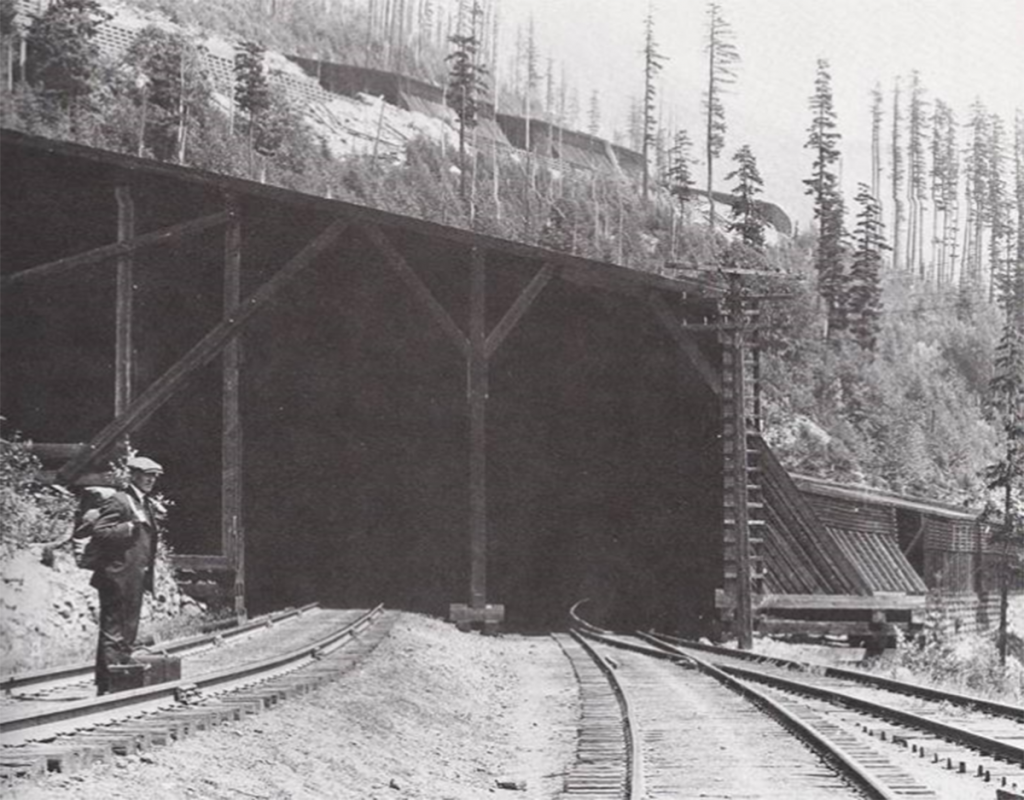
Being the third day of winter, at least according to the weather bureau, let’s talk snow. With his pack, canteen and camera gear, photographer James A. Turner is ready for another day on Stevens Pass in the Washington Cascades. The scene is Corea, near the Great Northern’s Martin Creek loop, in 1925.
Turner placed himself properly to one side, looking into the picture, in what must be a tripod, timed picture. From what I know about him he traveled alone, and did not own a car. He no doubt rode the train from Seattle and managed a drop-off. A man of class, you will see Turner dressed this day with a white shirt and tie. He was a personal friend of my friend, the late Warren W. Wing, also an avid railfan photographer and book publisher. Turner’s son’s home in Gig Harbor was literally a gallery of his father’s works.
Snow sheds were common in West Coast railroading. Those vertical beams and sloping roof are solid 12 x 12s. Providing those today would be nearly impossible. Is it any wonder why the Great Northern Railway, with miles of snow sheds, invested in the 8-mile tunnel under Stevens Pass.?
There is irony here. Some say if the railroad had not cut down so many trees in their quest to build snow sheds, that saturated snow would have remained in place on those slopes. Others will say the beams didn’t come from those same trees. Hmmmmm.
Note the attachment: The eastbound is about to enter the Horseshoe Tunnel. It will curve to the right, cross another trestle and work its way to and through the upper snowshed. Turner was standing about where the boxcar is exiting the lengthened snow shed.
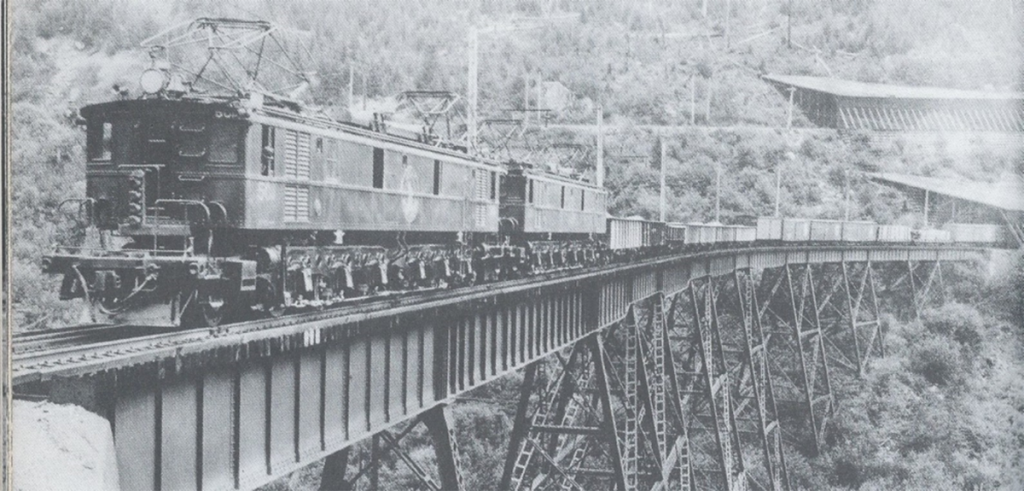
Credits: attachment photo by Lee Pickett, seen in book: Lines West by Charles R. Wood – Gary Ostlund.
Left to right: Morton’s Gap March 10, 2019; Earlington March 9, 2019; again at Morton’s Gap (Photos by Ricky Bivins). Our President Ricky Bivins meets with Lieutenant Governor Hampton along with other state officials and the Kentucky Department of Aviation at Frankfort in the Capitol Rotunda February 28, 2019. (Click for larger view)
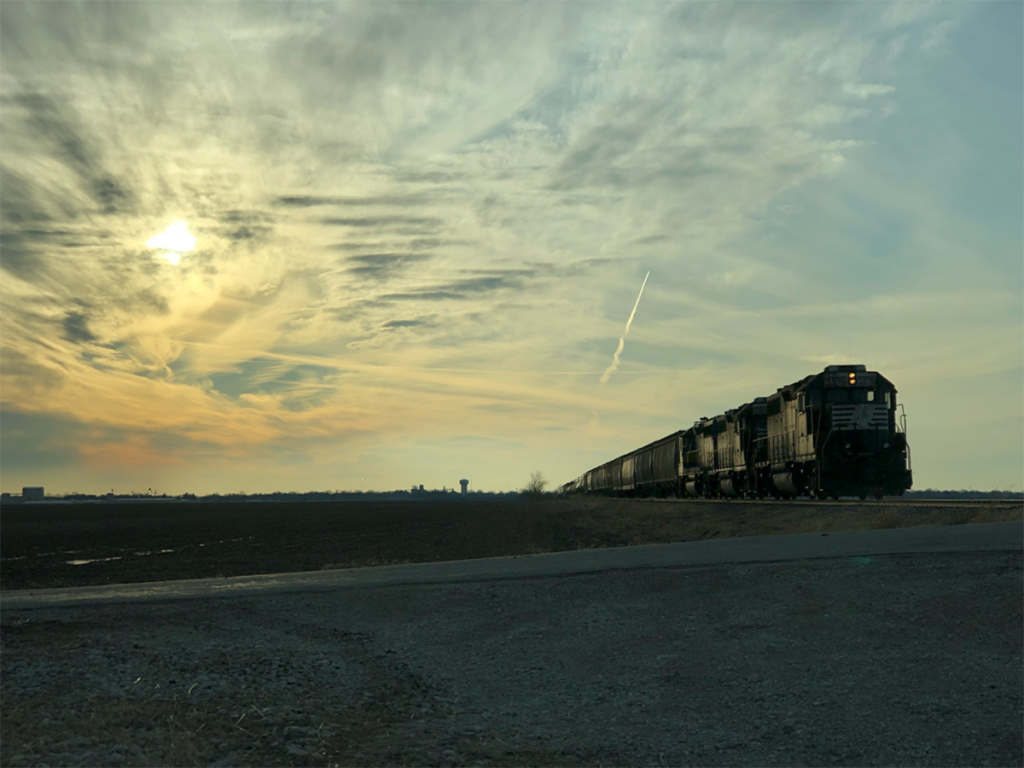
The DREI waits for track authority to head east on the outskirts of Tuscola IL, 3/10/19 – Photo by Matt Gentry
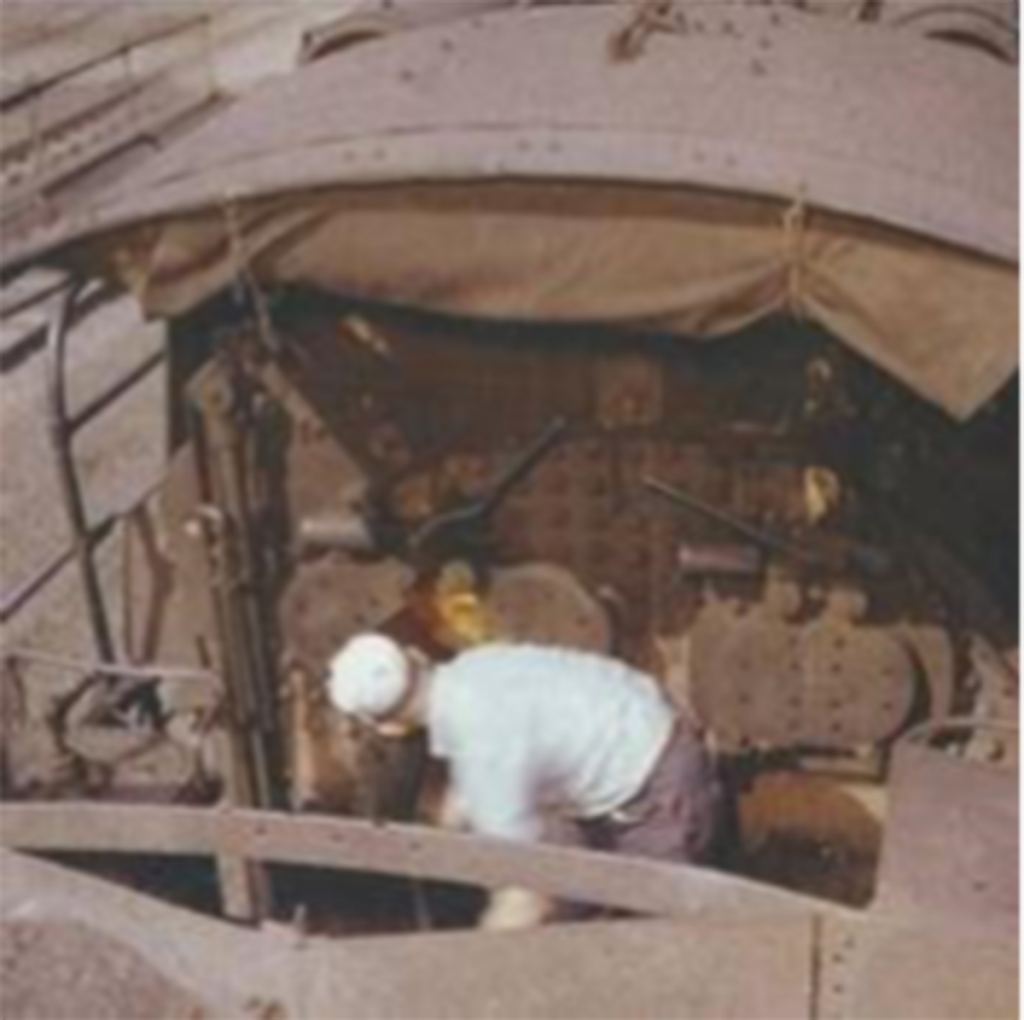
Camelback locomotives (also known as a Mother Hubbard or a center-cab locomotive) is a type of steam locomotive with the driving cab placed in the middle, astride the boiler. Camelbacks were fitted with wide fireboxes which would have severely restricted the engineer’s visibility from the normal location at the rear.
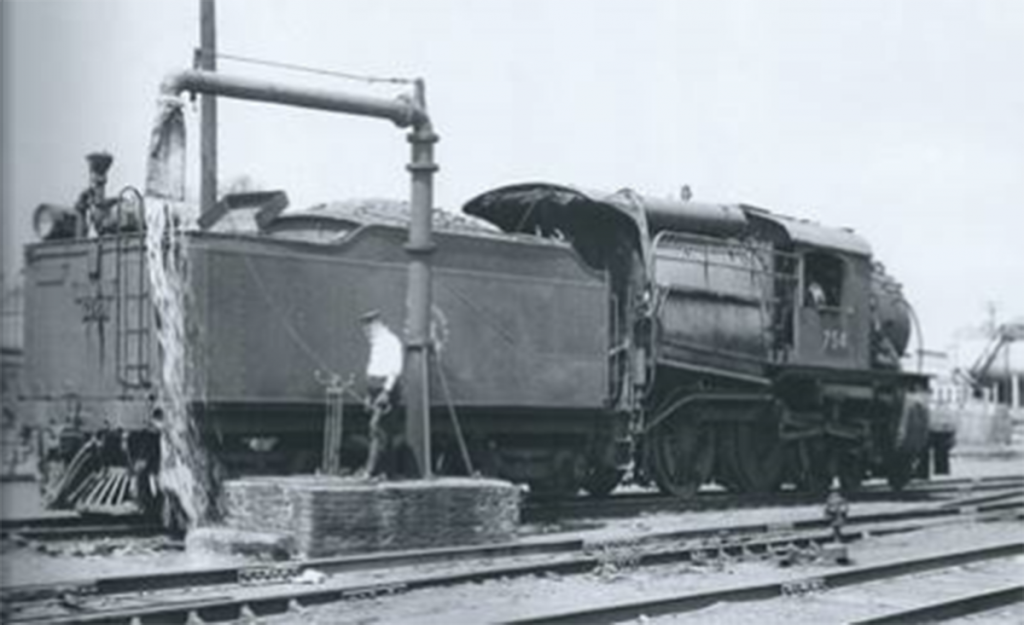
You can see in the picture (above) the size of the firebox, extra wide in order to burn cheap and readily available anthracite coal. Placement of the cab above the driving wheels also provided added traction. Camelbacks were widely used on the Central Railroad of New Jersey and the Reading Railroad. The fireman worked from a large platform on the tender, and in some cases had a chute to allow him to deliver coal to the front of the grate.
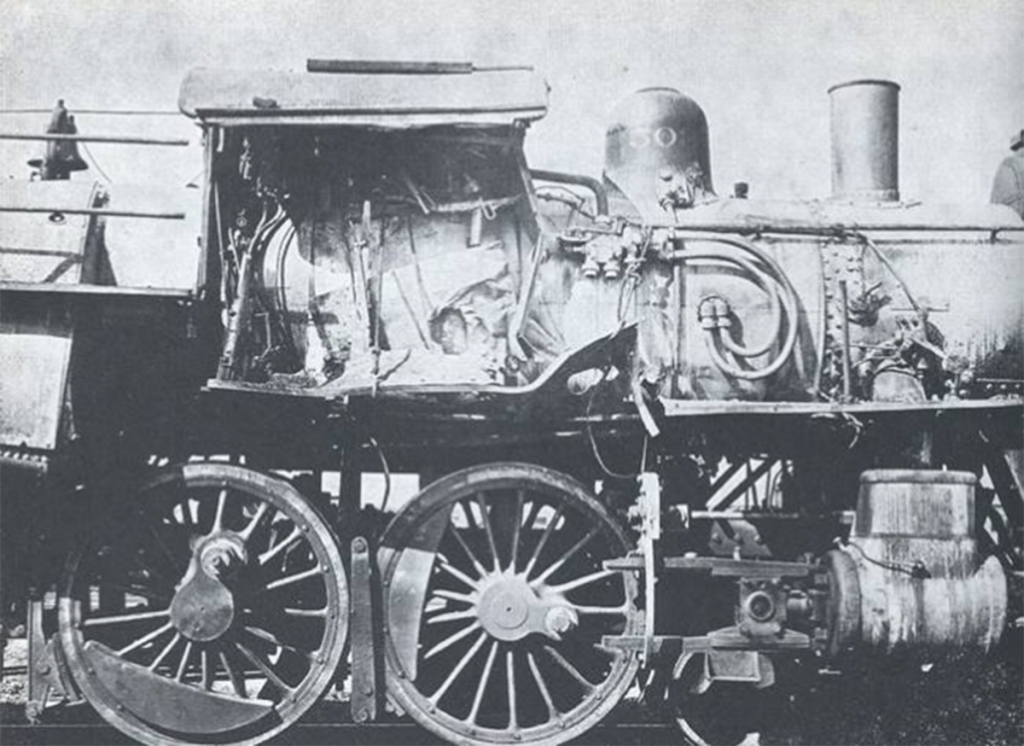
The Camelback’s cab astride the boiler design raised concerns for its crew. The engineer was perched above the side-rods of the locomotive, vulnerable to swinging and flying metal if anything rotating below should break. In addition, the fireman was exposed to the elements at the rear. The Interstate Commerce Commission banned Camelbacks but gave exceptions to allow those under construction to be completed.
A broken side rod swiped clean the engineer’s side of the cab on this Delaware & Hudson engine. This ever-present danger to the engineer explains the eventual outlawing of center-cab locomotives.
Credits: Two pics at top by the late Phil Hastings as seen in Kalmbach’s Steams Lost Empire. Damaged camelback photographer unknown, in Train Wrecks a Robert C. Reed book. -Gary O. Ostlund